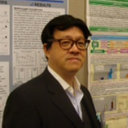Isolation and immunobiological classification of Streptococcus sanguis from human tooth surfaces.
Mo kle
Abstrè
A total of 113 pure cultures of Streptococcus sanguis were obtained from dental plaque samples of 64 subjects. All isolates synthesized glucan from sucrose, elaborated peroxide, and were alpha-hemolytic. Two biotypes and four serotypes were differentiated within the species. Biotype A (95 isolates) fermented salicin and inulin and hydrolyzed arginine and esculin, whereas biotype B (18 isolates) did not possess these activities. The isolates were serotyped with autoclaved extracts against whole-cell antiserum to strains ATCC 10556 or ST3 (serotype I), ATCC 10557 (serotype II), ATCC 10558 (serotype III), and ST7 (serotype IV), by the capillary precipitin test. Serotypes I, II, III, and IV were found to consist of 24, 16, 37, and 15 isolates. Type IV was demonstrated anew in this study. The remaining 21 isolates were not typed because of either multiple reactions or nonreactivity against the standardized typing sera. All isolates of serotype II belonged to biotype B, which resembles Streptococcus mitior physiologically. Five isolates representing four serotypes and an untypable strain were examined for their cariogenicity against specific-pathogen-free Sprague-Dawley rats fed high sucrose diet no. 2000. Organisms of each isolate were established in the mouths of the rats, but only three isolates induced weak caries that were restricted to pits and fissures of occlusal surfaces of the teeth.


